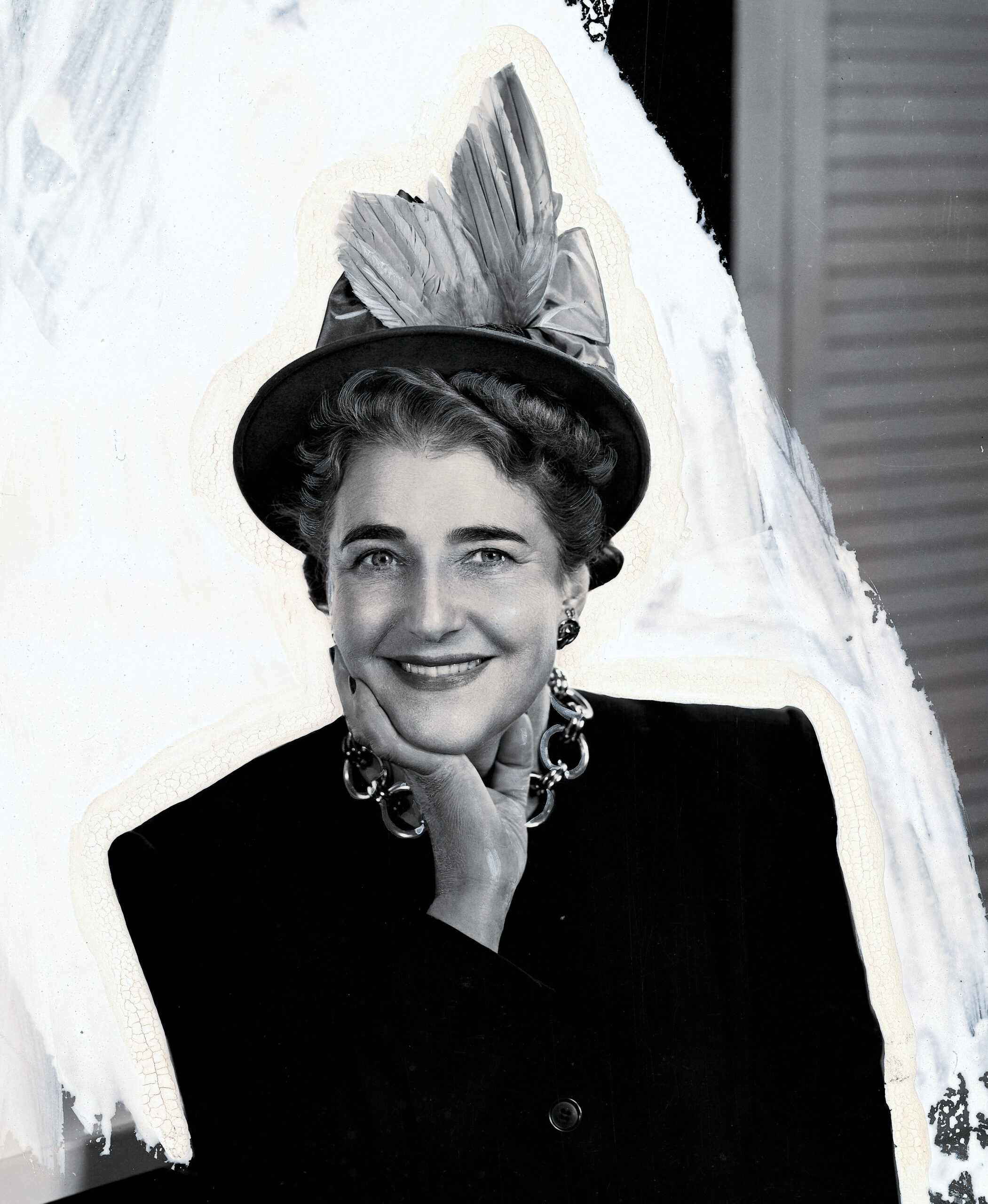
HISTORY
Dorothy Draper was born on November 22, 1889 into the upper-class Tuckerman family of Tuxedo Park, New York, one of the first gated communities in the United States. Her parents were Paul Tuckerman and Susan (née Minturn) Tuckerman.
Draper took great pride in her family and their connections to American history. Her maternal grandparents were John Wendell Minturn (son of Robert Bowne Minturn, a prominent merchant and shipper) and Louisa (née Aspinwall) Minturn (daughter of William Henry Aspinwall, a business man and co-founder of the Pacific Mail Steamship Company and the Panama Canal Railway). Draper’s great-grandfather, Oliver Wolcott, was a signer of the Declaration of Independence. She often drew inspiration from this and would include patriotic details, such as American eagles, in many of her design projects. Educated primarily at home by a governess and tutors, Draper spent only two years at the prestigious all-girls private Brearley School in New York City, but that was the extent of her formal education. She received no formal training for design.
In 1912, Draper married Dr. George “Dan” Draper, who later became the personal doctor to President Franklin D. Roosevelt after his diagnosis with polio. (Draper had her own personal connection to the Roosevelt family, she and Eleanor Roosevelt were cousins and grew up together.) Dorothy and Dan had three children- Diana, George, and Penelope, before divorcing in 1930.
During the beginning of their marriage the Drapers bought and sold houses and Dorothy developed a reputation as having a flair for decorating. She redecorated her homes in such a unique style that her high society friends began to ask for the same for their own homes. Encouraged by her success and her friends’ encouragement, Draper started the Architectural Clearing House in 1925. It was “arguably the first official interior design business.” After several successful apartment lobby renovations, Draper changed the firm’s name in 1929 to Dorothy Draper and Company.
Draper’s big break came in the early 1930s when the real estate developer, Douglas Elliman, hired her to redecorate the Carlyle Hotel on Madison Avenue in Manhattan. Draper was then again hired by Elliman to redecorate a block of former tenement homes in the area known today as Sutton Place. Draper had all the buildings painted black with sharp white trim and added bright colors to each of the individual doors. They quickly became sought-after luxury apartments.
In 1937, Draper created a full top-to-bottom decorative scheme for New York City’s Hampshire House apartment hotel. She sourced artisans in Brooklyn who could fashion enormous scroll-and-shell bas-reliefs, floral swags and multi-arm chandeliers. The lobby was given a bold black and white checkerboard floor, with a mix of period pieces such as a thick glass Art Deco mantelpiece surround, Victorian-style wing chairs, and neo-Baroque plaster decorations. Her use of sliding glass doors instead of shower curtains was considered highly innovative.
One of Dorothy Draper’s most famous designs was The Greenbrier Hotel in White Sulphur Springs, West Virginia. During World War II it was used as a military hospital. After the war the Chesapeake and Ohio Railway purchased the property and Draper was retained to redecorate the entire resort. She designed everything from matchbook covers to menus to staff uniforms. Draper transformed the Greenbrier in only 16 months, “Draperizing” 600-plus guestrooms and all the public areas took 45,000 yards of fabric, 15000 rolls of wallpaper and 40,000 gallons of paint. In exchange for her work at The Greenbrier, Draper picked up the highest fee ever paid a decorator. The $4.2 million renovation was unveiled at an opening party featuring such society guests as the Duke and Duchess of Windsor and Bing Crosby.
Draper continued on with many more hotel designs, including the Sherry-Netherland in New York, the Drake in Chicago, and the Fairmont in San Francisco. At the height of the Depression, she spent $10 million designing the Palácio Quitandinha in Petrópolis, Rio de Janeiro, Brazil. Also during the Depression, she wrote the Ask Dorothy Draper column which ran in 70 newspapers, and advised people to, “take that red and paint your front door with it.” They also bought more than a million yards of her signature cabbage rose fabric.
In the early 1950s, Packard hired Draper to bring her design charm to their automobile interiors. Draper’s 1954 concept for the cafeteria at New York’s Metropolitan Museum of Art, which critics initially snubbed as “The Dorotheum,” featured birdcage chandeliers and a sky-lit canopy. One of Draper’s last projects was the 1957 International Hotel at Idlewild Airport (now the John F. Kennedy Airport) in New York.
She retired in 1960, Draper suffered from Alzheimer’s disease towards the end of her life. She passed away in Cleveland, Ohio, on March 11, 1969. After a funeral in Newport, Rhode Island she was buried at Saint Mary’s Episcopal Churchyard in Portsmouth, Rhode Island.
Her legacy continues on today. Countless interior designers list her as inspiration and her signature styles and shapes can be seen all over the world. In 2004, her 1941 book Entertaining is Fun! How to Be a Popular Hostess, was reissued and quickly became a best seller.
In May 2006, the Museum of the City of New York held an exhibition of Draper’s work called “The High Style of Dorothy Draper.” She is the only interior designer to have had a major, solo museum retrospective of her work, receiving over 1 million visitors.